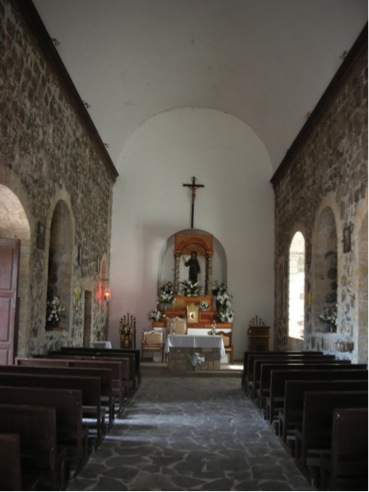
By David Kier
www.vivabaja.com
Co-author of ‘The Old Missions of Baja & Alta California, 1697-1834’
Traveling north from Loreto in November of 1705, the Jesuit Padre Manuel de Basaldúa founded the mission of Santa Rosalía at the Cochimí settlement of Mulegé. Santa Rosalía de Mulegé mission is located on a rare desert river, about two miles from the gulf coast. The mission and its farmlands were nearly destroyed by flash floods in 1717, and again in 1770.
The stone church overlooks the river from a high ledge and was constructed in 1766. This was less than two years before the Jesuits were expelled from the New World. Spain’s King Carlos III had been convinced that the Jesuits were amassing treasures and not paying the Crown its due. When inventoried, the true nature of the mission’s poverty was confirmed, there were no treasures.
The Franciscans replaced the Jesuits in California in 1768. Fr. Francisco Palóu wrote that he considered having the mission moved following the 1770 flood. A proposed new location was a place called ‘Magdalena’. Magdalena is just 15 miles north of Mulegé and today building ruins, an aqueduct, and a pila (reservoir) are seen, but no record of who built it is known. An old church about five miles further to the west, and close to the village of San José de Magdalena, is sometimes referred to as a Dominican mission visita ruin.
Even though mission activities ceased in 1828, the church at Mulegé continued to serve the new Mexican population that replaced the vanishing Indian population. Activities at the mission church continued to be documented through much of the mid to late 1800s. Priests assigned to Mulegé often were placed in charge of the other mission churches of the region (Loreto, Comondú, San Ignacio) as was noted in the government book of 1873.
Each of the Old (Baja) California missions has an interesting story and these short history notes may inspire further research and discovery. In the book, ‘The Old Missions of Baja & Alta California, 1697-1834’, we hope to inspire both visits to the missions and further research. A reference list of mission history books is included in the back.




